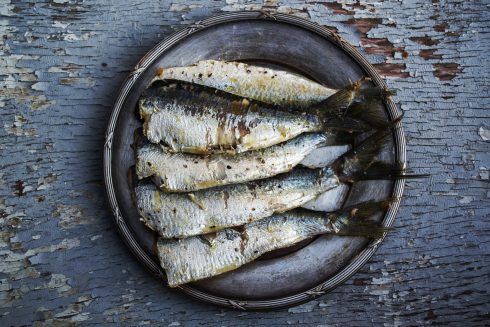AS far as the wine industry is concerned, sherry – or Jerez – has got everyone over a barrel.
It has become the drink of connoiseurs and is not only one of Spain’s best rated wines internationally, with numerous awards and accolades, but it is also exceptionally good value.
Take massive US critic Robert Parker. He has almost a dozen sherries in his top 100 best wines in Spain list, most of them at a fraction of the price of their rivals.
But while the wines are achieving critical acclaim, this has sadly not transferred into increased sales, with total purchases of sherry dropping again globally by six per cent last year.
“We are simply not fashionable,” explains Carmen Aumensquet, marketing boss of the official DO de Jerez. “And sadly in the UK the image of sherry is still as a grandmother’s drink, in particular with cream sherries.
“But this is so unfair and there is so much you can do with the different types of sherry. We just need to get the message across.”
The problem is in its marketing, which has gone from bad to worse since the 1980s, believes local critic Justin Roberts.
“Sherry is highly-rated in the wine trade and wins lots of awards, but its producers have failed to connect with the consumers,” says Roberts, the editor of wine website Jerezwine.com.
‘It is still a terrific, emotional and weather-driven drink’
“The rot started to set in with the cheesy adverts for the likes of Croft in the 1980s and things have not turned around for a generation,” continues Roberts, who has lived in Jerez for five years.
UK wine merchant Graham Chidgey believes the problem stems more from a change in fashion.
“I don’t think the sherry makers have done anything wrong,” says Chidgey, whose former company Layton’s began importing sherries in the 1950s.
“They just suffered as import duties went up on fortified wines in the UK and, at the same time, a series of new dry white wines, such as Muscadet and Macon, started coming out of France. Ports and German Rieslings suffered at the same time.”
While it has caused a couple of tricky decades for the sherry trade, he is, however, more than optimistic that it can be turned around.
“Sherry is still a terrific, emotional and weather-driven drink, with an ice cold fino, in particular, tasting fabulous on a hot evening,” he insists.
“I can see it making a comeback at a sophisticated, mid-priced level.”
As it happens, there are signs that this might already be happening with a number of fashionable restaurants stocking increasing numbers of sherries in both London and the US, where a new website The Secret Sherry Society is helping to increase sales.
Aside from chef Jamie Oliver promoting it on a recent TV programme on Andalucian food, Gordon Ramsey is a huge fan, while England’s top chef Heston Blumenthal has over 30 different sherries to choose from at his restaurant the Fat Duck.
Even more exciting is the recent opening of a sherry bar, Bar Pepito in London’s Kings Cross.
“It is incredibly trendy and there are over 30 sherries on offer,” says Roberts, whose blog highlights the latest impulses in the world of sherry. “It is creating a real buzz, which is just what sherry needs.”
At Bodega Hidalgo though, things could not be further from the modern image of the drink.
Little changed in 50 years, the office still sports wooden sideboards and old photos that are in need of a dust. The company van looks like something out of a silent movie.
A fifth generation Hidalgo, Juan Manuel, 36, studied law in Pamplona before being hauled back to Jerez to run the family business.
Joining a trade that was seriously on the wane in the 1980s and 1990s with vineyards being torn up to make way for sunflowers and cotton, he had a clever vision on how to turn things around.
“I started thinking about Jerez over sherry,” he explains. “It was as simple as one, two, three. And we started producing purer, top quality wines.
“It is rather like the difference between commercial and pure classical flamenco. I am making the classical stuff here.”
He took me on a trip into the cavernous vineyard that is part incorporated in the old city walls. A fascinating visit, one of the warehouses is bigger than a football field, 14 metres in height and houses 3500 casks alone.
While there are a few that go back to even 1874 when the business started, most of the old oak barrels are at least 100 years old.
Unlike most vineyards many of Hidalgo’s Finos spend up to 14 years in cask, in the classic solera system, while he also produces a cheaper version, which spends four years in cask.
The place is authentic in the extreme and all the old doors and patios have been well conserved, while a barrel mender comes in a few days a week to repair the old vats.
In contrast, on the other side of town you will find Lustau, one of the most forward-thinking, slick operations.
Its brands include the Lustau Solera Reserva Pedro Ximenez San Emilio, which just won the much-coveted gold medal in Brussels, while the company has three wines scoring over 93, according to Parker.
It is well worth a trip to the bodega, which sits on Calle de los Arcos, a short ten-minute walk from the centre.
At Lustau you can really see why the bodegas are referred to as the ‘cathedrals of Spain’.
Soaring ceilings and repeating arches make its bodegas appear like temples dedicated to the wine they house.
These high ceilings are the keys to making fine sherry as the bodegas central function is to control the humidity and temperature of the maturing wine.
Another interesting place to visit is Bodegas Estevez, where you can combine sherry with horses, as well as one of the best private art collections in Andalucia.
The producer of famous brands such as La Guita and Valdespino has stables with 60 thoroughbred horses and, in another huge warehouse, a fabulous collection of artwork, which counts over 100 Picasso prints and a Miro.
The same can be said for Bodegas Tradicion, which also counts on a collection of delightful paintings.
In total, there are over 200 paintings straddling six centuries of Spanish art.
And while there is only space for around 60 of these to be displayed at any one time, you would normally expect to see a Goya or two, a Velazquez, an El Greco and painter of the moment, Joaquin Sorolla.
The wine is also of exceptional quality, and the bodega is the only one in the Jerez region to concentrate exclusively on the oldest vintages, with most of them being a minimum of 20 years old.
It is appropriate for a city that was founded in 1000BC by the Phoenicians, before the Romans moved in leaving among other relics, appropriately, a mosaic depicting vine leaves and tendrils.
While Jerez has always a favourable site for wine with its chalky albariza soils, it was the Moors, who in 711, named the city Scheris, from which its current name heralds.
While it is the 500 years of Moorish rule to which the city owes much of its rich culture, it was actually the English, who really put the city on the map.
Starting in the 16th century when the taste for sherry reached British shores, by the next century around 70 per cent of the area’s wines were being exported to the UK.
Written about by Shakespeare – whose character Falstaff in King Henry the Fourth, regales that sherry ‘ascends into the brain; makes it quick, forgetive, full of nimble, fiery . . . and becomes excellent wit’ – by the late 18th century, dozens of British merchants had opened businesses in Jerez.
Alongside the wealthy Spanish families they were soon building beautiful homes in the centre, not to mention enormous bodegas.
Their legacy is obvious today with names such as Harvey’s and Williams & Humbert still adorning numerous outbuildings.
While there are only a fraction of the once 10,000 bodegas in the city, the ones that stand are a delight to poke around.
Sturdy constructions usually painted in the trademark yellow, white and green, some are now Government departments, while others are supermarkets.
So where next for sherry?
“We are working hard to change the image of sherry,” explains DO spokesman Aumensquet.
“In Germany and Holland we are trying to move people away from the white brands, and in England, away from the image as being a drink for old people.”
She concludes: “Ultimately we need people to come over to visit. To see the bodegas, try the huge variety of sherries and make up their own minds.”
As an article in the New York Times insisted last year; the historic drink is ‘due to make a comeback’, so perhaps sherry is not being rolled over a barrel just yet.








